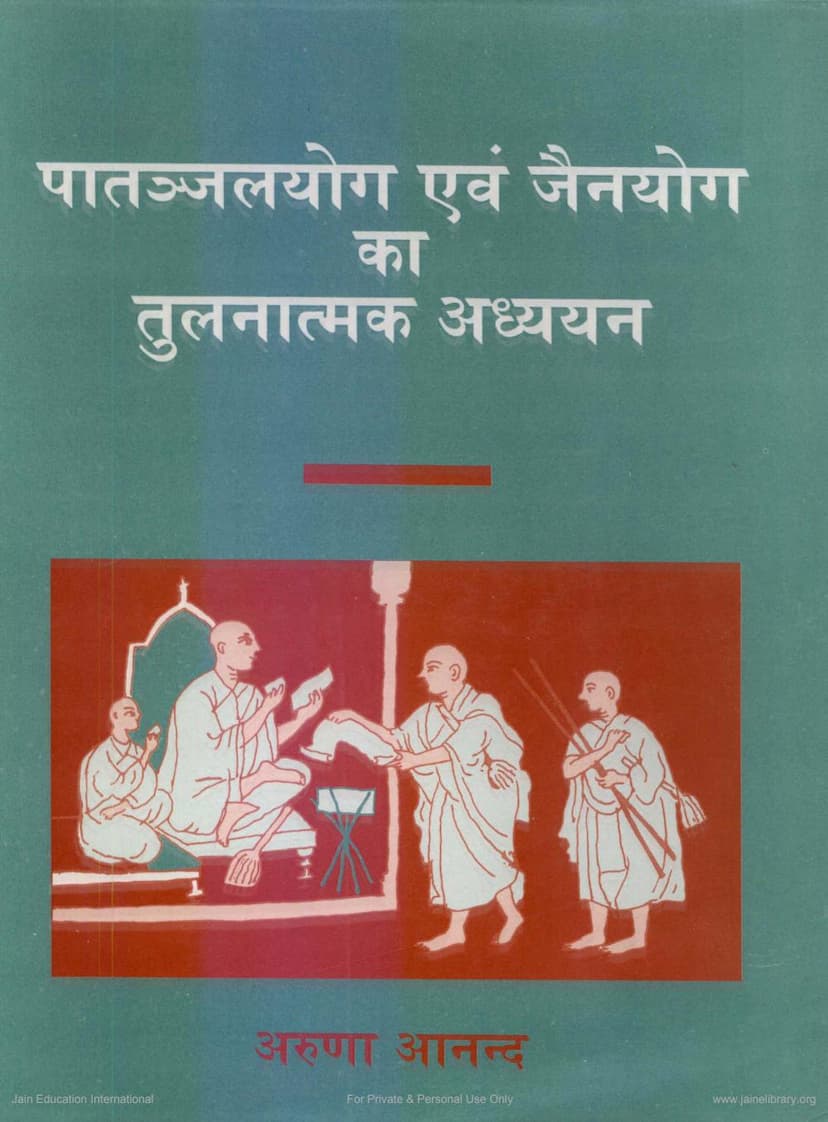Patanjalyoga Evam Jainyoga Ka Tulnatmak Adhyayana
Added to library: September 2, 2025

Summary
Here's a comprehensive summary of the Jain text "Patanjalyoga evam Jainyoga ka Tulnatmak Adhyayana" (Comparative Study of Patanjali Yoga and Jain Yoga) by Aruna Anand, based on the provided pages:
Book Title: Patañjalayoga Evaṁ Jainayoga Kā Tulanātmaka Adhyayana (A Comparative Study of Patanjali Yoga and Jain Yoga) Author: Aruna Anand Publisher: B L Institute of Indology (in association with Motilal Banarsidass Publishers Private Limited)
Core Premise: The book undertakes a comparative analysis of Patanjali Yoga, rooted in Vedic traditions, and Jain Yoga, a spiritual discipline within the Jain tradition. The central aim is to highlight the similarities, differences, and unique characteristics of both yoga systems.
Key Arguments and Content:
-
Introduction to Yoga:
- The text begins by defining "Yoga" according to Jainacharya Haribhadra as "Mokkheṇa joyaṇāo joō savvo vi dhamma-vāvāro" – meaning all religious activities that lead to liberation (Moksha) are considered Yoga. This definition is presented as being in alignment with Patanjali's famous aphorism "Yogaś citta-vṛtti-nirodhaḥ" (Yoga is the cessation of the modifications of the mind).
- It notes that while the traditional Jain interpretation of 'Yoga' sometimes referred to the combination of physical, verbal, and mental activities (which could lead to karmic bondage), later Jain acharyas attempted to integrate Jain yoga practices with the structured path of Patanjali's Ashtanga Yoga (eight limbs of yoga).
- The systematic and comprehensive presentation of Jain yoga practices is largely attributed to Acharya Haribhadra, who began this tradition around the 8th century CE. He adapted the prevailing scriptural style to suit contemporary circumstances and popular interest, presenting a unique, multi-faceted, and integrated form of Jain yoga that was both comparable to Patanjali Yoga and aligned with Jain principles.
-
Historical Context and Development:
- The book acknowledges that while Jain tradition contains ample yoga literature, much of it is not fully available today. The seeds of Jain yoga are found scattered in Jain Agamas, but a systematic exposition emerged later.
- Acharya Haribhadra is credited with initiating the tradition of writing systematic and comprehensive texts on Jain yoga, integrating existing fragmented yogic ideas with the principles of Patanjali Yoga.
- Subsequent Jain scholars like Acharya Shubhachandra, Acharya Hemachandra, and Upadhyay Yashovijaya followed Haribhadra's lead, enriching Jain yoga literature.
-
Comparative Analysis:
- The book aims to demonstrate the commonalities, differences, and unique aspects of Patanjali Yoga and Jain Yoga by studying the works of key Jain acharyas: Haribhadra, Shubhachandra, Hemachandra, and Upadhyay Yashovijaya.
- It highlights that while yoga's importance is central to both traditions, there's been a relative scarcity of comparative and critical studies. The author emphasizes the need for such studies to understand Jain yoga comprehensively.
-
Structure of the Book:
- The book is structured into seven chapters, covering:
- Chapter 1: Introduction to Patanjali Yoga and Jain Sadhana methods, a comparative survey, and related literature. It also introduces the personalities and works of the key Jain acharyas (Haribhadra, Shubhachandra, Hemachandra, Yashovijaya).
- Chapter 2: The nature and types of Yoga in both traditions.
- Chapter 3: Eligibility, prerequisites, and essential instructions for Yoga practice in both traditions.
- Chapter 4: The relationship between Yoga and conduct (Achar), exploring Jain ethics (Samyakdarshan, Samyagjnana, Samyakcharitra), karma theory, and the interplay of destiny and effort.
- Chapter 5: The spiritual progression, including Jain Guṇasthānas (stages of spiritual development) and the yoga-views of Patanjali.
- Chapter 6: A comparative discussion of Siddhis (supernatural powers) in both traditions.
- Chapter 7: An overall synthesis of the similarities, differences, and unique features of Patanjali Yoga and Jain Yoga.
- The book is structured into seven chapters, covering:
-
Key Jain Acharyas and their Contributions:
- Haribhadra (8th Century CE): A pivotal figure who synthesized Jain yoga with mainstream yogic practices, presented Jain yoga in a systematic and accessible manner, and wrote influential works like Yogabindu, Yogadṛṣṭisamuccaya, Yogaviṃśikā, and Yogaśataka. His approach was inclusive, attempting to bridge traditional Jain scriptural styles with contemporary philosophical discourse and popular taste.
- Shubhachandra (11th Century CE): Author of Jñānārṇava, a comprehensive text on yoga that incorporates elements of Ashtanga Yoga, Hatha Yoga, and Tantra Yoga, harmonized with Jain principles.
- Hemachandra (12th Century CE): A renowned scholar who authored Yogaśāstra, a significant work on Jain yoga, blending traditional practices with philosophical insights and presenting them in a systematic and concise manner, particularly relevant for lay practitioners.
- Upadhyay Yashovijaya (17th Century CE): A prolific scholar who further elaborated on Jain yoga, often comparing and contrasting it with Patanjali Yoga and other philosophies, demonstrating a strong grasp of Nyaya and dialectics in his approach. He is noted for his critical analysis of Patanjali's Yoga Sutras from a Jain perspective.
-
Methodology:
- The author, Aruna Anand, bases her comparative study on the yogic texts of these four prominent Jain acharyas. The research aims to uncover the parallels, divergences, and distinct contributions of each tradition to the broader field of Indian spiritual practices.
Overall Significance: The book aims to fill a gap in scholarly research by providing a structured and comparative understanding of Patanjali Yoga and Jain Yoga. It highlights the shared goal of spiritual liberation and self-realization while detailing the distinct paths and practices developed within each tradition. It emphasizes the efforts of Jain acharyas in harmonizing their own yogic traditions with the widely recognized framework of Patanjali Yoga, thereby enriching the understanding of both.